Check this page again tomorrow for updates, and in the meantime check my stories on Instagram at @SebastienPlus 🙂
I’m on holidays on 15-20 August, enjoying Sado Island (Niigata prefecture) and its Earth Celebration annual music festival with tourism & hospitality professionals striving to make foreign leisure travellers enjoy exciting local activities and to welcome them during this inspiring event. We dodged 4 typhoons (!), enjoy a big blue sky, and are ready with sun cream and water-filled tumblers. To discover our group and project, see:
Unusual? Unique?
Sado Island has a few unique things to offer to travellers. However, it’s important to book a guide in advance if you want good explanations in your native language.
Famous Birds
Sado island is famous for its critically endangered crested ibis, and cute related decorations abound including mascots!
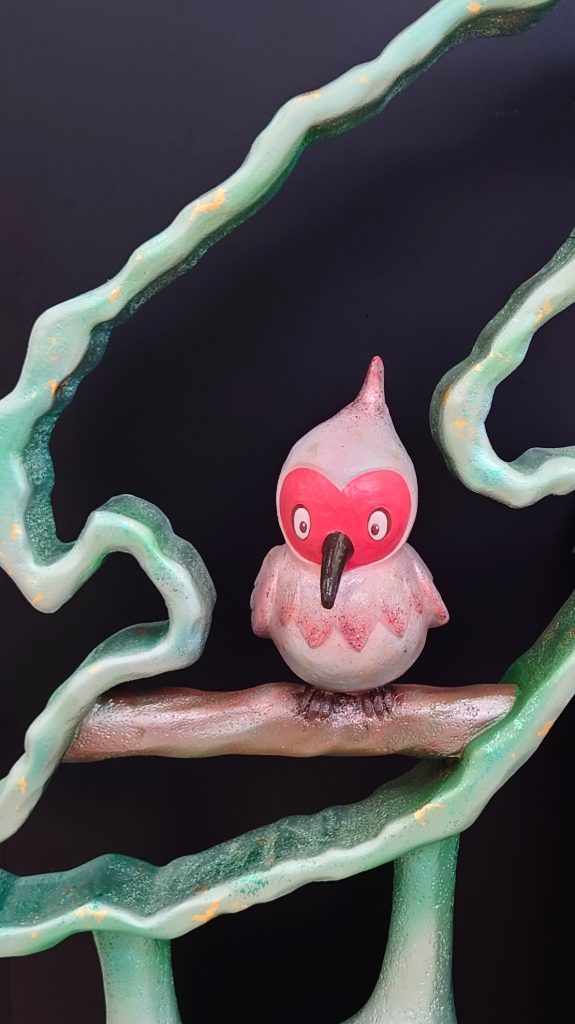
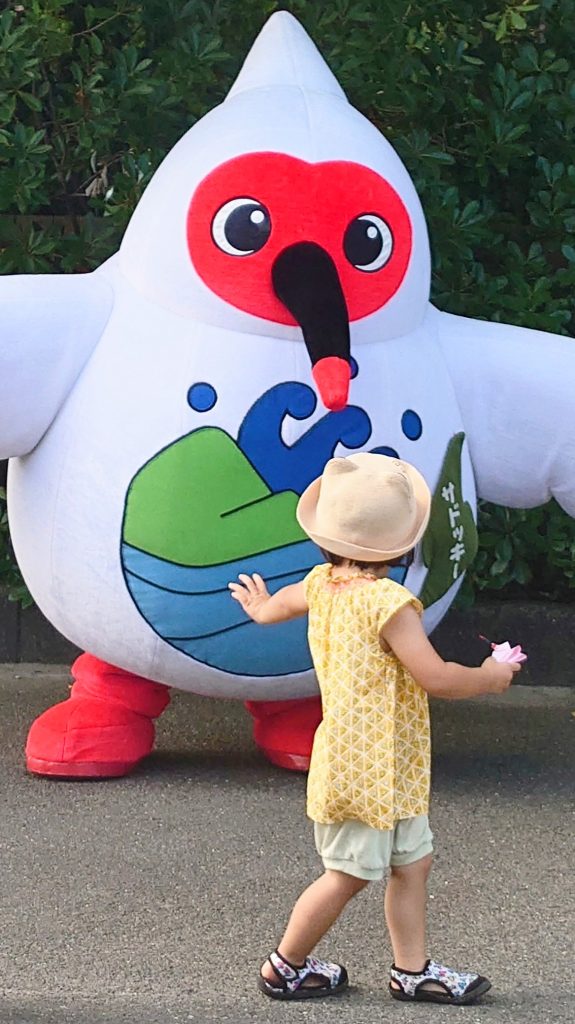
Due to environmental damage and illegal hunting, Japanese-born crested ibises “toki” are now extinct. However, crested ibises have been reintroduced thanks to China, which donated a pair of birds to start repopulating, and thanks to successful artificial breeding. The best place to learn about and see crested ibises is Toki-no-mori Park. The modest entrance fee contributes to the regenerative initiative, and the staff will help you spot and watch the birds during your visit. Unfortunately, the excellent explanations on the walls are only available in Japanese (QR codes for English are unusable).
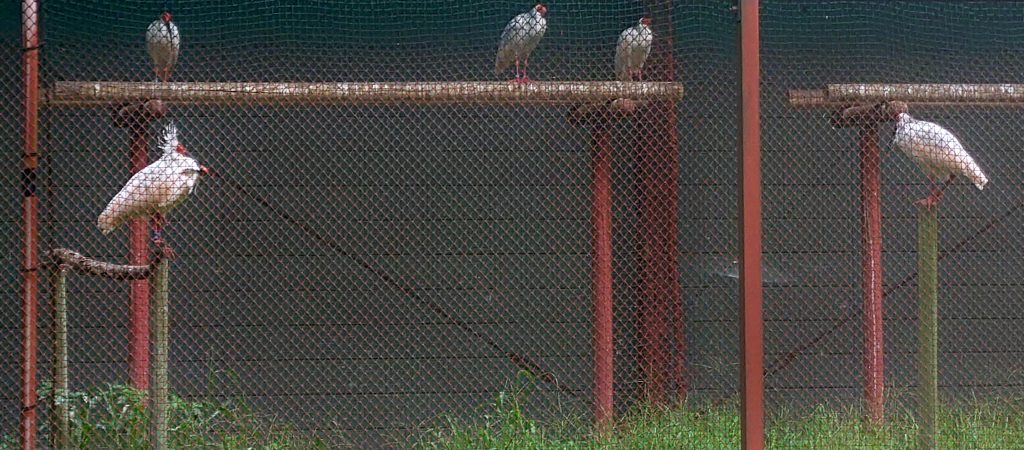
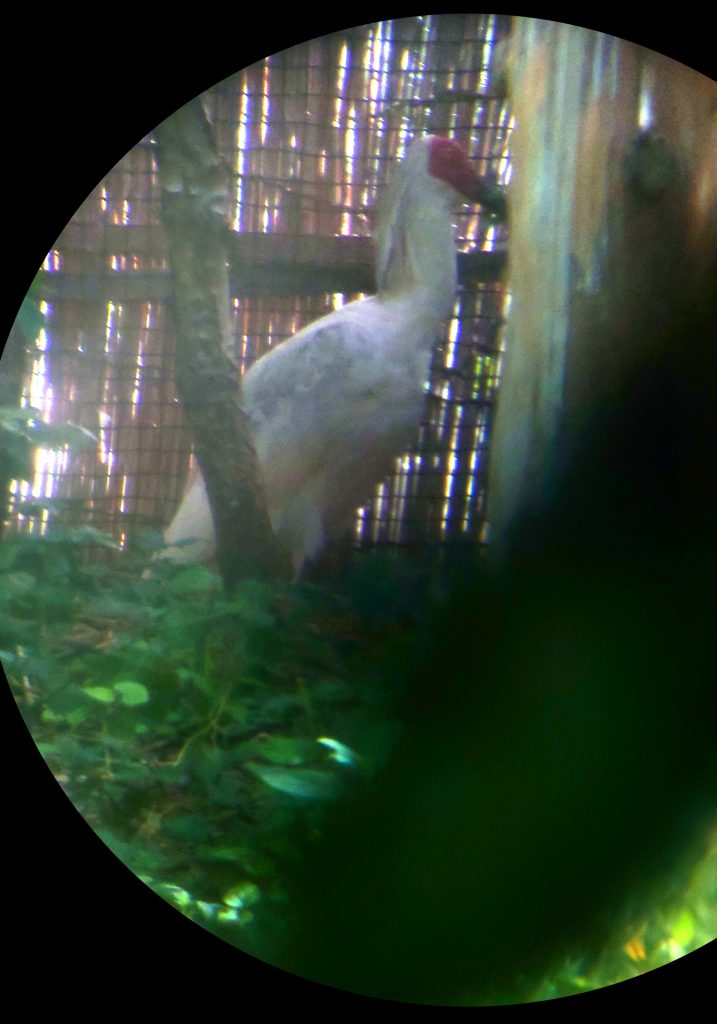
Gold & Silver Mines
Family-friendly tours of Kinzan (“Gold Mountain”) are available with a focus on the Edo era (when samurai ruled Japan) or on the modern era. The Edo visit features mannequins and animated robots clarifying the work conditions and tasks. Online explanations can be accessed via visitors’ own phone using a QR code and the local Wi-Fi (though with typos and vocabulary too difficult for non-native English speakers). Finally, a Mixed Reality tour with special glasses takes you to a fantasy world like some theme parks.
Interestingly, the technologies developed for the mines were widely used in agriculture, fishery and saké brewing e.g. survey methods used to create new rice fields. The souvenir shop sells coffee with gold flakes, saké with gold flakes, tea with gold flakes, cosmetics using gold as an ingredient, jewellery…
Budget-friendly activities are unusual (e.g. turning clay into silver) or quite common (e.g. gold-leaf pasting).
Lake Kamo Sea Kayak By Night
Epic activity based on available information. Unfortunately, we could not experience it due to high waves.
Rabbit Kannon & Visit At Chokoku-ji Temple
We visited Chokoku-ji temple, noting a beautiful tree (1,000+ y.o. cedar?), flowers, explanations in many languages (Romanian, Portuguese…), many small statues of Boddhisatva Jizo, and a unique tall statue of a Rabbit containing the Boddhisatva Kannon inside its chest (rabbits clear the local grass/weeds and that rabbit Kannon statue was built to thank & celebrate them). The local priest gave a us a quick tour but would have shown even more (40 minutes!) if we had had more time; he even let us walk on a small wooden bridge to touch a holy tree.
Bath tub cruise
We enjoyed a night cruise in a wooden “bath tub”, with the almost full moon and bonfires. These fisherman boats were invented after an earthquake rose the seabed in a way preventing the use of usual boats. According to our guide, sharks do not swim here, but one may see dolphins and maybe even obake monsters 🙂 A sunset cruise would have been more romantic, with more opportunities for photos. However, the night cruise enabled us to clearly see plancton that emits light when stimulated with e.g. a paddle (most visible when there is no full moon).
Hokusetsu Brewery
We visited the 150+ y.o. award-winning brewery Hokusetsu, which is particularly famous thanks to Robert De Niro, produces nihonshu (sake) as well as shochu, and sells worldwide through Nobu. The facilities are modern (thanks to subsidies for automation), with machines mixing content, separating elements (centrifuge — rare in Japan — they were the second brewery to use this technology), etc.
A unique aspect was the use of ultrasounds and of music to improve the quality of the sake. The music during the tour is not for the visitors but for the bacteria that make sake! The water comes from a nearby well filled by water flowing from the local mountain, darkness is controlled by closing doors, temperature is controlled by air conditioning, and humidity is controlled by the wood on the ceiling. At zero degrees, the music room is a pleasure to visit in summer 🙂
Comparative tasting is possible for free unless you are a driver (I tasted 10+ bottles during my visit!). Now, I’d love them to organize a dinner course of food/sake pairings with the help of a skilled chef (ideally including bread made using sake kasu).
Note: Their sake labelled “100% crested ibis certified rice” is made using rice grown in an organic way for the benefit of the repopulation of crested ibises.
Road Trip
Sado island is fine for travellers who enjoy driving, with comfortable roads, little traffic, and almost no way to get lost 🙂 The 30km-long Osado Skyline road offers seasonal landscapes, and a stunning view of the island from Hakuundai rest area deck (altitude: 900+ m).
You may drive to Senkakuwan bay to enjoy the cliffs and/or a glass-bottom boat cruise.
One evening, we relaxed wrapped in the songs of cicadas while watching Lake Kamo from the viewpoint at Shiizakisuwa shrine.
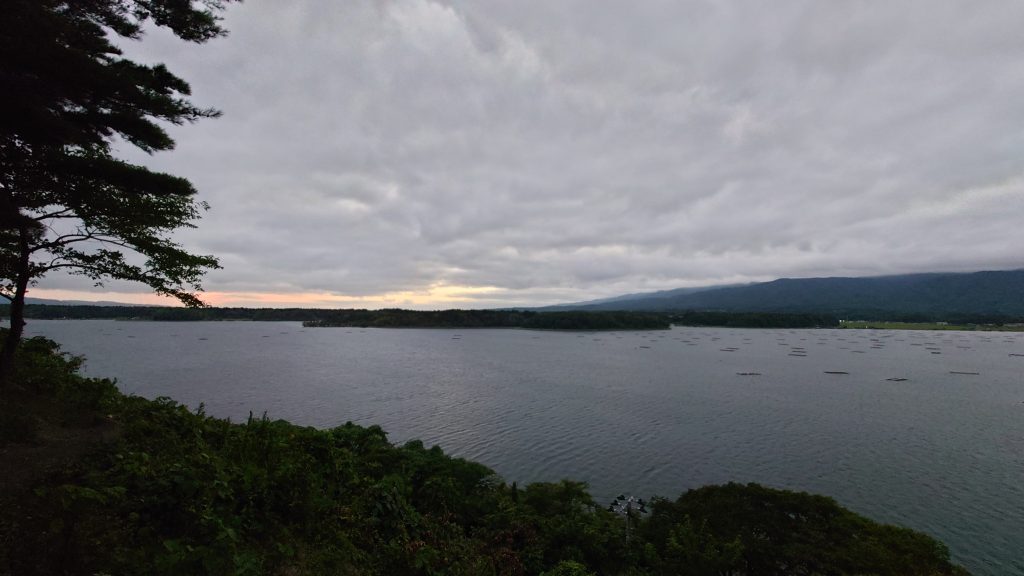
And of course, we met nice people on the way. For example: a priest of Suwa-jinja in Hamada area who gave each member of our group a wooden lucky charm and a string to wear it like a pendant (unusual in Japan).
Lodging
One good option is Tabino Hotel Sado, which is conveniently located, comfortable, quiet, with effective air conditioning and reasonably big desks in the rooms, and with friendly staff (we met multilingual Japanese & Taiwanese staff). Interestingly for onsen & sento fans, this hotel has a public bath filled with mineral-rich deep-sea water. Also, you can enjoy the surroundings from the roof.
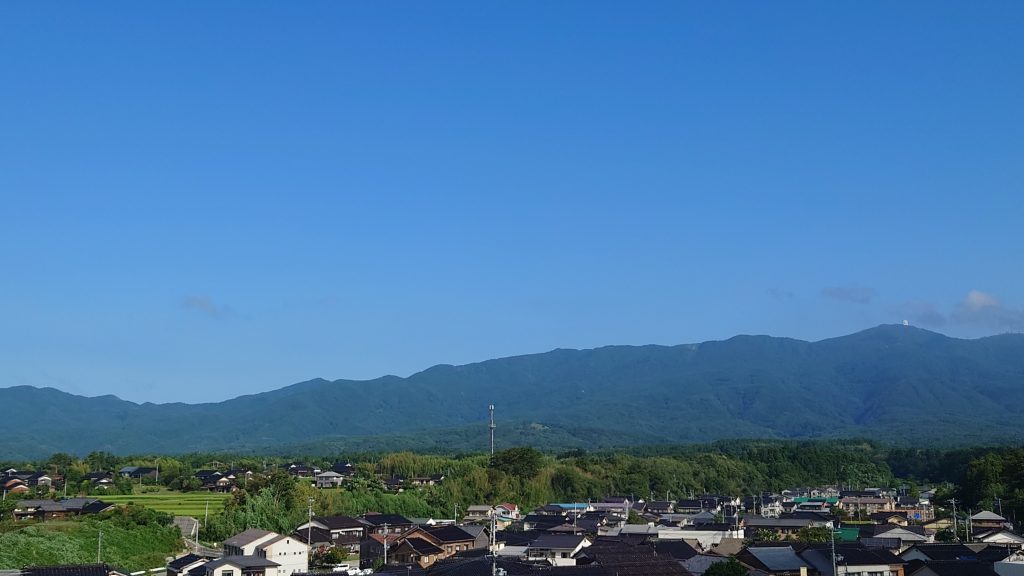
Another option is the Azuma hotel, with its ocean & sunset views. It is in a nice environment, with a swing, seats & parasols outside, a nice coastal view with rocks in sea, a nice view from its restaurant, facilities for business meetings, rooms with their private balcony bath letting you enjoy the seascape or starry sky.
If you travel with children or friends, the Euphoria house is a particularly good solution: 4 bedrooms, 2 toilets, a big table and smart TV in the main room, a kitchen, a sauna, individual air conditioning everywhere, at walking distance of the sea/ferry… Those prefering a more Japanese stay can check the traditional house Hananoki.
Food & Drinks
We savoured summer-limited beautiful (green!) spicy udon noodles in soy milk with diverse vegetables at Sado Udon Aoi. Vegans & vegetarians should contact the staff in advance to request a preparation matching their dietary needs.
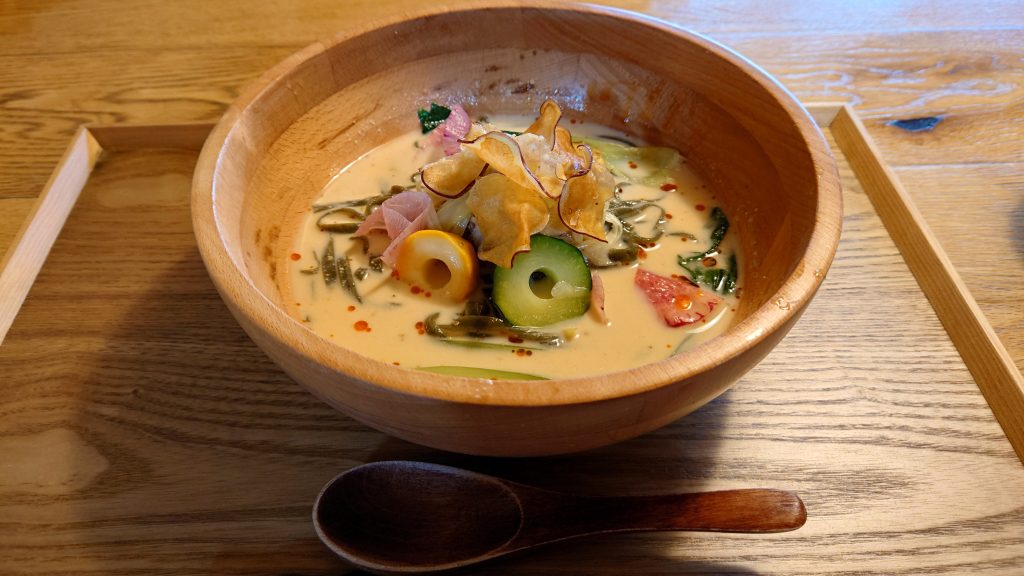
Near a spot featured in Ghibli’s Laputa, Kirazawa Terrace had great food, and seats outside (ideal inspiring or autumn). The staff made the effort to prepare a vegan set for our group 🙂
Access & Beyond
Access to Sado Island was quite easy and relatively fast. From Tokyo station, one can take a high-speed train (± 2 hours) to Niigata station. From Niigata station, I walked ±30 minutes (flat all along and scenic beside the water during the last stretch) to Niigata port while fellow travellers rode taxis. From Niigata port, we rode a ferry for ±1 hour to Sado island for 7,050 Yen.
On Sado island, travellers definitely need a car or bicycle to move around. The roads are simple and comfortable.